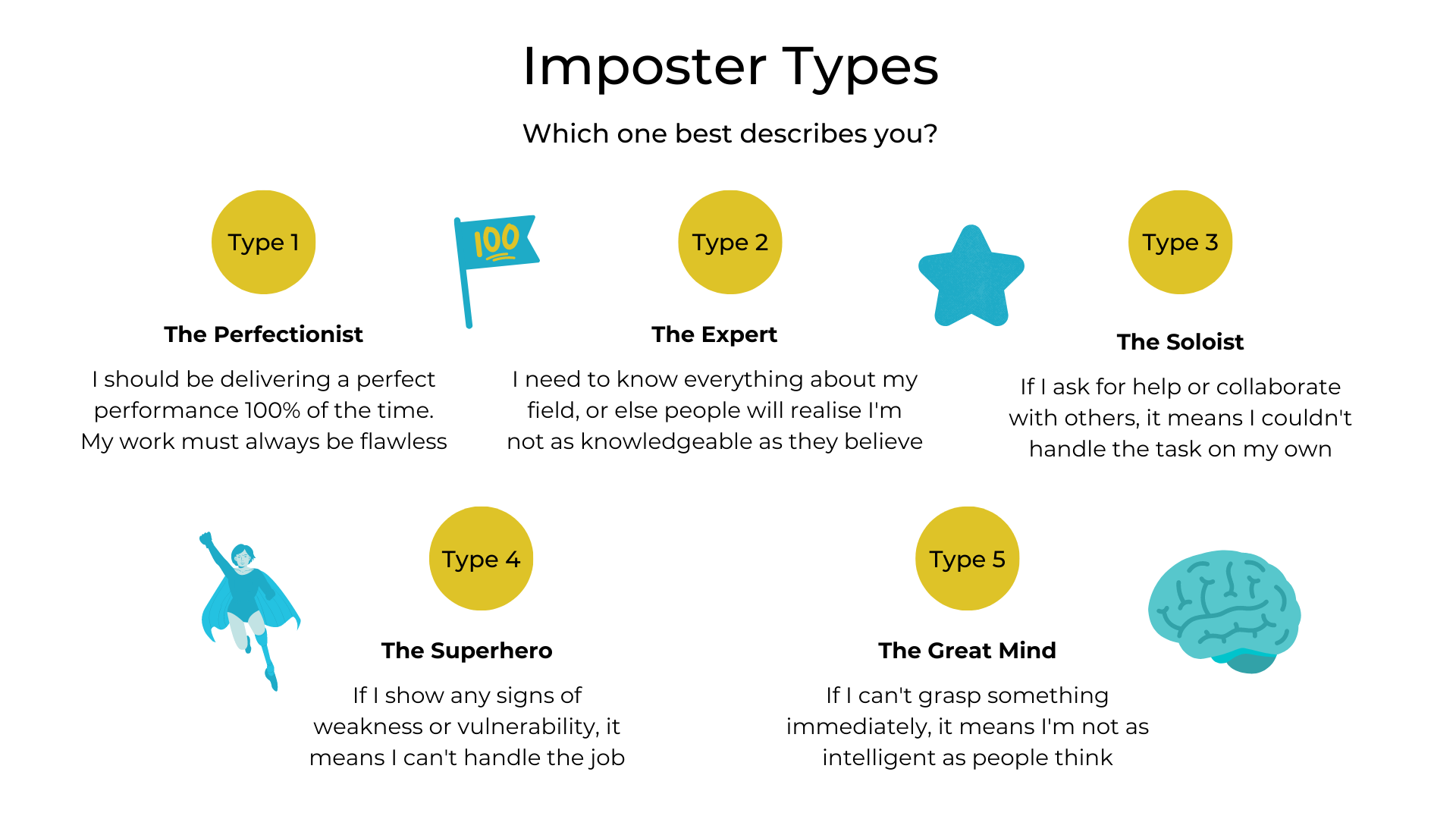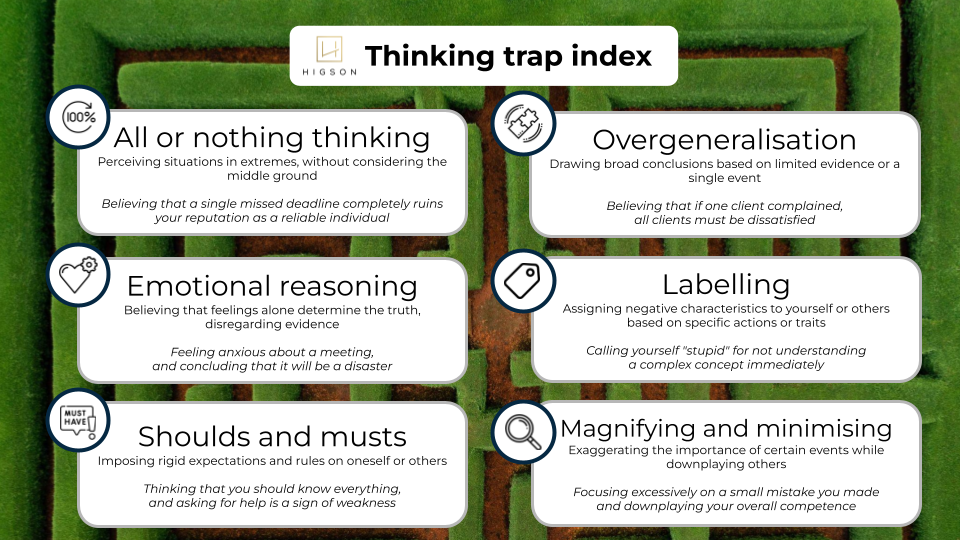22nd September, 2020 • 3 min

Written by Coran Lui
11th July, 2023 •

Have you ever found yourself doubting your own abilities, afraid of being found out as incapable or a fraud?
Maybe you’ve heard a voice in your head saying, “You aren’t supposed to be here,” or “You’re not as capable as others think you are.” Imposter thoughts can be very draining, leaving us feeling inadequate and undeserving of our achievements.
These thoughts are much more common than we might realise. In fact, research finds that 70% of people (across all demographics) experience imposter thoughts. This shows that imposter thoughts are not a rare occurrence, but rather a common human feeling we experience in our pursuit of growth and success.
Imposter thoughts, or imposter syndrome, as it’s often called, is seen as a taboo topic in today’s society. It’s widely perceived as a disorder that needs to be overcome or cured.
But what if we shift our perspective and see these imposter ideas in a different light? What if we recognise that they might actually stem from good intentions and have potential benefits?
If you’ve ever struggled with imposter thoughts, or manage a team of individuals who do, this blog is for you. Continue reading to learn how we can reframe our mindset, and discover practical strategies to challenge these doubts and concerns.
What are imposter thoughts?
Imposter thoughts can arise as a result of an internal conflict between having both soaring ambitions and self-doubt.
On one hand, we have a genuine fundamental desire for growth and constant progress. While on the other hand, we become burdened with the worry that our achievements don’t match up with the evidence, and that our successes just happen to be from good luck.
And this isn’t something new.
Take Albert Einstein for example, an individual born over a century ago, who is synonymous with the term ‘genius’. He once revealed:
“The exaggerated esteem in which my lifework is held makes me very ill at ease. I feel compelled to think of myself as an involuntary swindler.”
Even Einstein, despite his breakthrough contributions to science, experienced imposter thoughts. Nonetheless, he used them as a catalyst, to make new discoveries and transform our understanding of the universe.
How imposter thoughts manifest
There are five main ‘imposter types’ that commonly occur. Take a moment to reflect on which type(s) you relate to the most.

Reading through this, you may be thinking… “how can we get rid of imposter thoughts then?”
If we take a step back, it’s clear that these thoughts actually stem from good intentions – from us wanting to be competent, successful and to contribute to the growth of our team and the business.
To help shift our perspective and challenge these imposter thoughts in a productive way, here is a three-step approach.
1. Be aware of common thinking traps
The challenge with imposter thoughts is that we can end up getting lost in our own self-talk, making it important to be aware of our internal dialogue so that we can factor it in when making judgements and decisions.
One of the main ways imposter thoughts form is through cognitive distortions known as ‘thinking traps’, which you can see here:

It’s important to be mindful of our thought patterns, and catch ourselves when we instinctively react in a negative way.
While these common thinking traps all have their unique characteristics, we can counter them through applying certain strategies.
One of the ways we can effectively challenge imposter thoughts and empower ourselves to be more forward-thinking is to reframe how we interpret these thoughts.
2. How to reframe the way we interpret imposter thoughts
As renowned psychologist Martin Seligman once said: “while you can’t control your experiences, you can control your explanations”.
Many things in life are outside of our control, including how people perceive us and our actions, or how we think they perceive us. But what we can control is how we choose to respond to our own thoughts.

The 3P’s is a valuable tool to help us reframe our imposter thoughts. It involves a simple three part process to help evaluate the nature and truthfulness of our own negative self-talk, by asking ourselves three questions:
How does this work in practice? Let’s say you have just pitched to a client but couldn’t answer some of their questions. At the end of the meeting, they decline your proposal.
Imposter thoughts start to creep in, making you doubt your ability to pitch effectively. In this situation, you can reframe your thoughts using the 3P’s tool.
Permanent: Consider whether this setback is actually permanent. Are you really bad at pitching? Reflect on similar situations in the past, and how you overcame them.
In this case, you may come to the conclusion: “No, this isn’t permanent. I may have been flat today because I didn’t have enough sleep and the pitch came at short notice.”
Pervasive: Reflect on whether this setback actually extends to all other situations. Focus on the current issue and reflect on previous wins, or peer feedback. This will help you maintain a balanced viewpoint instead of overgeneralising the rejection to your overall ability.
For example, you might say: “No, this isn’t pervasive. This was only one client out of many opportunities.”
Personal: Challenge the assumption that this outcome only reflects your own personal shortcomings, and consider external factors that could have influenced the outcome.
Here, you might say: “No, this isn’t personal. While my presentation could have been better, the reality was that the client didn’t seem ready to open this account.”
You can see how the 3P’s tool helps us avoid rigid thinking in our beliefs and expectations, and break down situations to evaluate them in a rational way.
Take a moment to reflect on a challenging situation, and answer the 3P’s for yourself.
Of course, we shouldn’t tackle all situations with unrealistic optimism. The purpose of the tool is to put things into perspective, and help us to move towards a forward-thinking growth mindset.
3. Ask for feedback

While it is effective to be aware of thinking traps and use the 3P’s tool when we find ourselves having imposter thoughts, we can also have moments of self-doubt where we undervalue our abilities.
Gathering external evidence and feedback is one of the best ways to help us gain a more balanced perspective, and increase our confidence.
Here are three brilliant questions you can ask others:
By actively asking for feedback and engaging in open and honest discussions, you can gather evidence that challenges your imposter thoughts as well as identify action points to continually improve.
For more on why asking for feedback is so important, and helpful strategies on how to improve your feedback approach, read our blog here.
In summary
At Higson we run workshops and training programmes to help reframe imposter thoughts, adopt a growth mindset, and build resilience. If you are interested in learning more, please get in touch.